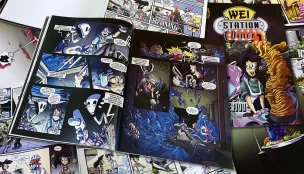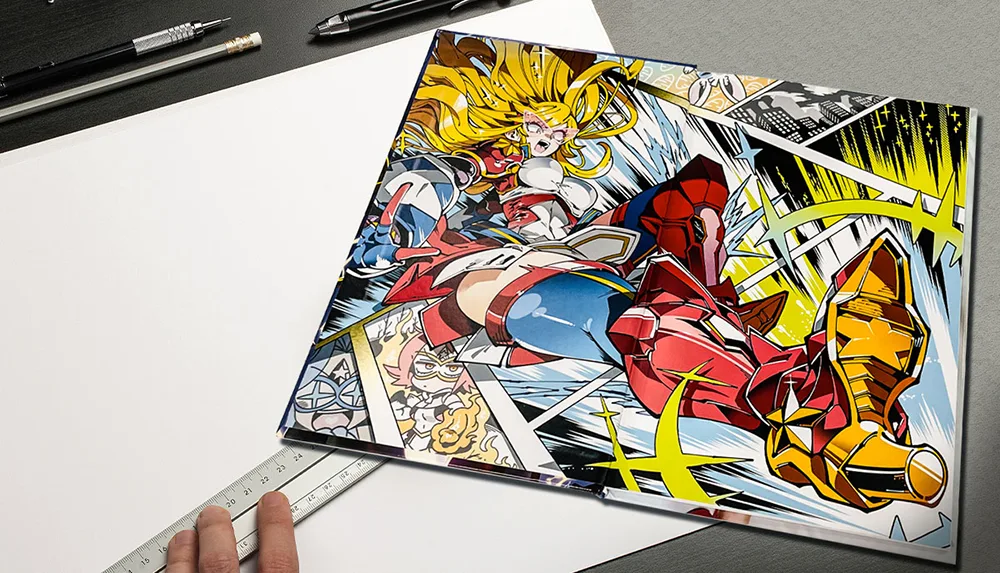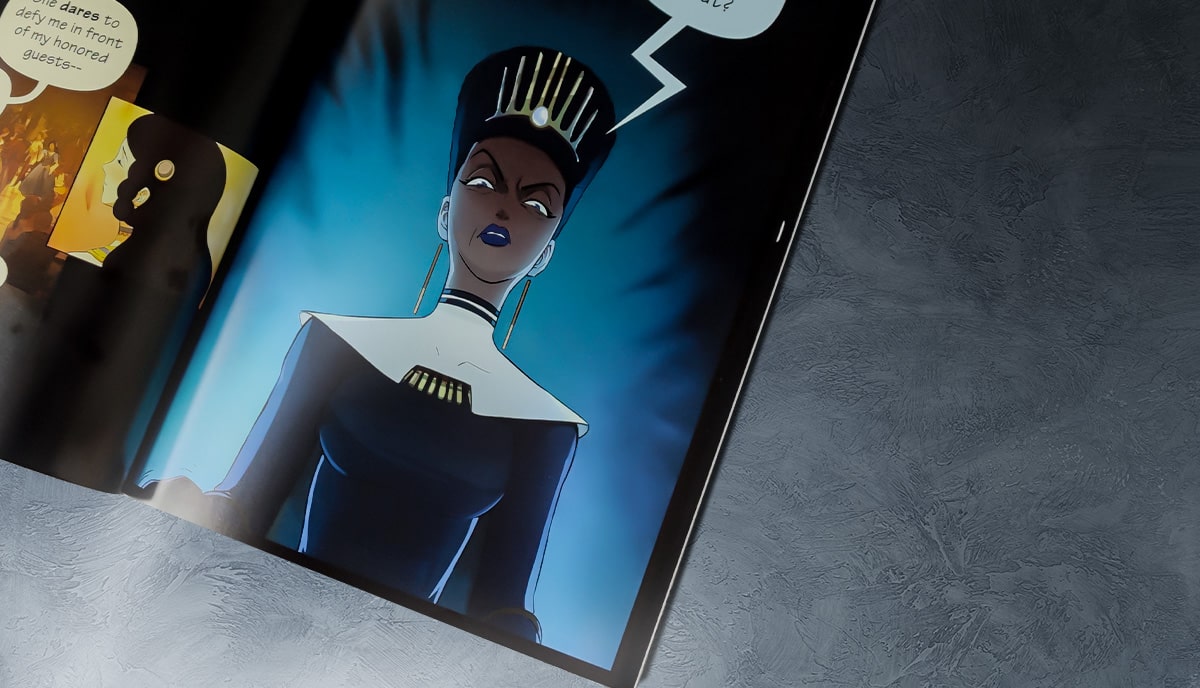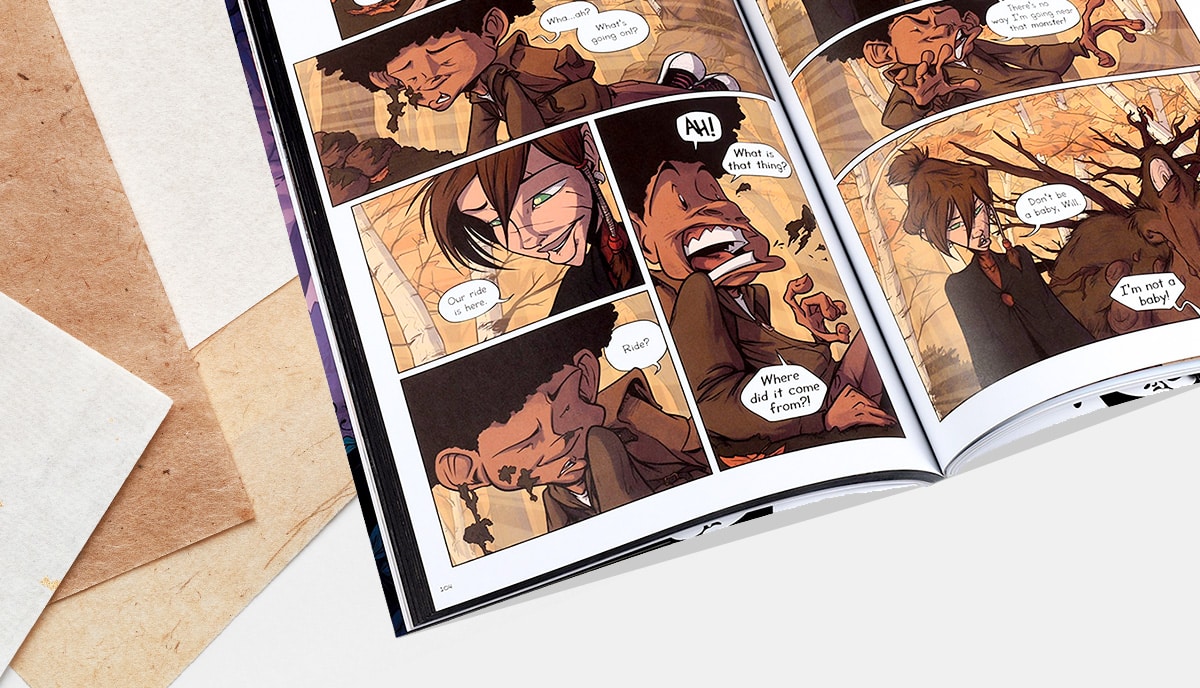Writing, designing, printing, and publishing a graphic novel is a rewarding experience. Here’s our ultimate guide to crafting a compelling plot
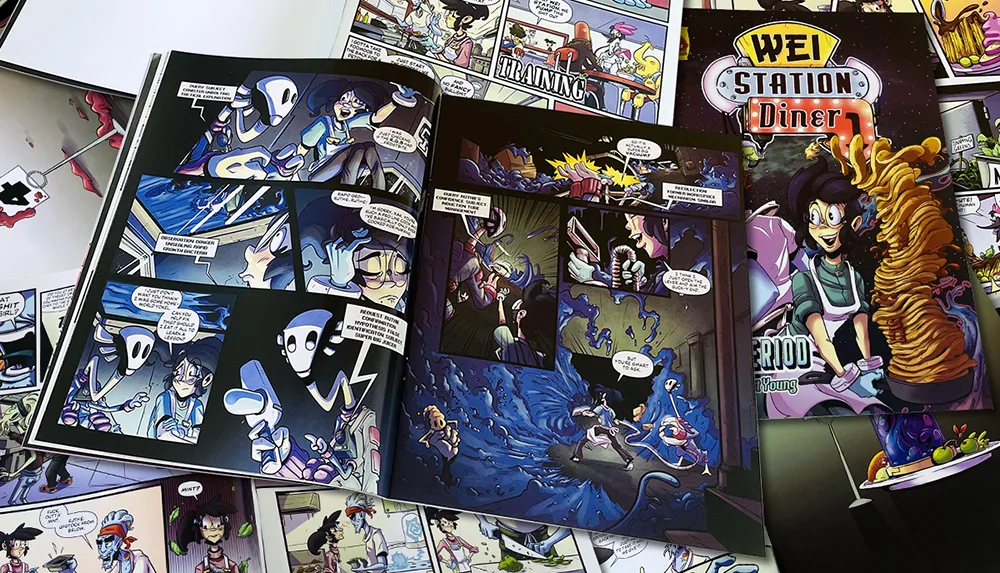
As an international printer of graphic novels, we’ve always been fascinated by the art of storytelling through panels and illustrations. While comics and graphic novels share similarities, there are crucial differences to understand when it comes to crafting a compelling plot for your graphic novel. In this ultimate guide, we’ll walk you through the steps to creating a captivating plot that will keep your readers hooked from beginning to end.
Understanding the difference between a graphic novel and a comic
Before we dive into crafting a plot, it’s essential to understand the difference between a comic and a graphic novel. While both media use sequential art to tell stories, comics are usually shorter, episodic, and published in periodicals. Graphic novels, on the other hand, are longer, self-contained stories that are often published in a single volume.
One key difference between comics and graphic novels is the way they’re consumed — readers tend to read comics issue by issue, whereas graphic novels are designed to be read in one sitting. This means that the pacing and structure of a graphic novel’s plot need to be carefully crafted to keep readers engaged throughout the entire book.
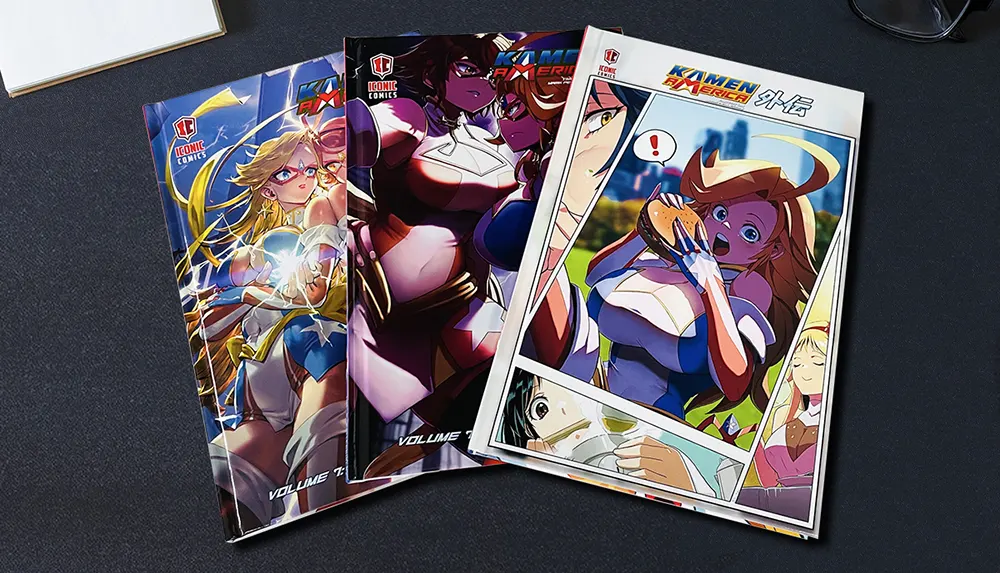
What is a plot and why is it important in a graphic novel?
At its core, a plot is the sequence of events that drive a story forward. It’s the roadmap that guides your characters from the beginning of the story to the end, and it’s what keeps your readers invested in the story. In a graphic novel, a well-crafted plot can elevate the artwork and make the story feel more cohesive and engaging. Captivating your readers’ attention, keeping them invested in your characters, and on the edge of their seats to find out what happens next, is all the work of your plot and vital to your graphic novel’s success.
A good plot should be driven by conflict — whether it’s external (a villain trying to take over the world) or internal (a character struggling with their own demons). Conflict creates tension, which keeps readers invested in the story and rooting for the protagonist. The best graphic novel plots combine internal and external conflict and put your protagonist on the “horns of a dilemma” forcing them to make painful, almost impossible decisions.
Steps to creating a compelling plot for your graphic novel
Now that we’ve covered the basics, let’s dive into the steps you can take to create a compelling plot for your graphic novel.
Generating graphic novel ideas
The first step in crafting a plot is coming up with an idea for your story. This can be the most daunting part of the process, but there are plenty of ways to generate ideas. You can draw inspiration from your own life experiences, adapt a classic story, or even use writing prompts to spark your creativity. Anything can be the point of departure for a good story idea. It’s often just a case of being open to seeing what’s already there. As Neil Gaiman — world-famous graphic novelist and author of Coraline and Sandman — has pointed out, most of us have ideas all the time, but writers learn to notice them.
Once you have an idea, it’s essential to analyze it to determine if it’s strong enough to carry an entire graphic novel — which may be hundreds of pages long. Consider the themes, conflicts, and characters that will be a part of your story. Are they compelling enough to keep readers invested for an entire book?
Creating memorable characters for your graphic novel
A good plot is nothing without memorable characters to bring it to life. Whether it’s a hero, a villain, or a supporting character, each member of your cast should be unique and fully-realized. When creating characters, it’s important to give them depth and complexity. For each character you create, ask yourself the following questions:
- What motivates them?
- What are their flaws?
- What are their goals?
By giving your characters a rich backstory and personality, you’ll create a more engaging story that readers will be invested in. By exploring the inner lives of your characters you’ll also begin to discover new opportunities for conflict and development.
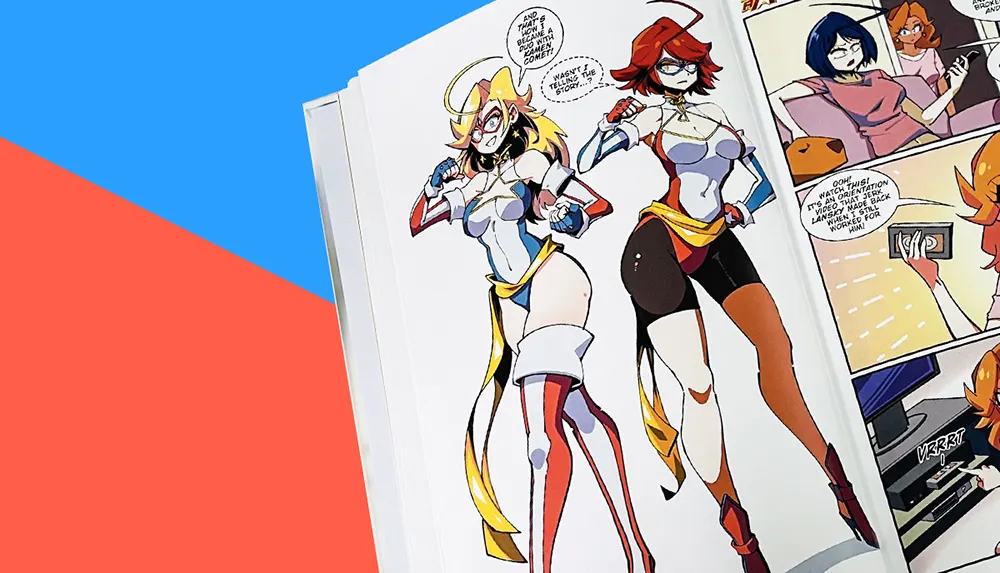
Understanding the role of panels in a graphic novel
Panels are the visual building blocks of a graphic novel, and they play a crucial role in how the story is told. Panels can be used to show action, convey emotions, and create a sense of pacing. Each panel is like a self-contained unit of meaning, a short scene.
When designing your panels, it’s important to consider the size, shape, and placement. Panels that are too small can feel cramped and hard to read, while panels that are too large can slow down the pacing. It’s important to find a balance that works for your story and your artistic style. Of course, you can use oversized panels — or “splash pages” — to create special emotional impact, and you can overlay different shapes and sizes to suggest time sequences or contemporary actions. But as a general rule, the basic panel design should be a certain number to a page — depending on the size and format of your book — and arranged in a logical left-to-right zig-zag reading pattern. Once you’ve established a rule, you can break it for special effects.
Panel definition and tips for effective use in a graphic novel
A panel is a single frame of a comic or graphic novel, and it’s usually surrounded by a border or gutter. Panels can be used to show different perspectives, create visual interest, and control pacing.
One effective way to use panels, for example, is to create a sense of movement and action. By using diagonal lines or staggered panels, you can create a sense of motion that draws readers’ eyes across the page. It’s also important to consider the gutters between panels — gutters can be used to create a sense of pause or transition between scenes and you can vary their style to suggest emotional content, too. Let’s just take a moment to look a bit more closely at gutters.
What is a gutter and how to use it in a graphic novel?
A gutter is the space between panels, and it’s an important part of how a graphic novel is read. Gutters can be used to create a sense of pacing, transition between scenes, or even as a storytelling device in their own right. When designing your gutters, it’s important to consider how they’ll affect the pacing — the sense of the passage of time, in other words — of your story and how they influence emotional impact and the logical reveal of the plot. Small gutters can create a sense of urgency and movement, for example, while larger gutters can create a sense of pause or transition.
Outlining your graphic novel — tips and tricks
Once you have your idea, characters, and an understanding of how to design and use panels in place, it’s time to start outlining your story. Outlining can help you structure your plot and ensure that it flows smoothly from beginning to end. While several famous traditional novelists don’t plan, but write “by the seat of their pants”, that’s not a viable option for the graphic novelist because of the visual storytelling involved.
When outlining, it’s important to consider the shape of your story. Where will the major conflicts and turning points occur? How will your characters grow and change throughout the story? By considering these questions, you can create a roadmap for your story that will help guide you as you write. You might edit and change it as you go, but setting out to write something as complex as a graphic novel without at least a broad strokes outline is to tempt disaster.
Writing your graphic novel
With your outline in hand, it’s time to start writing your graphic novel. Writing a graphic novel is a unique process that requires a balance of visual storytelling and traditional writing. If you’re generating both the text and the imagery as an author-artist, you should be prepared to go through several iterations of each panel, scene, page, and chapter before settling on a final version. If you’re collaborating with a graphic artist, you’ll need to work closely, communicate often, and be ready for lots of back-and-forth to bring the two elements — text and visuals — into perfect harmony.
Editing and revising your graphic novel
Once your first draft is complete, you’ll need to edit and revise. This is the stage where you’ll refine your plot, characters, and dialogue to ensure that they’re as strong as possible. Are there any slow sections that need to be trimmed down? Are there any plot holes that need to be filled in? Are there character inconsistencies? By carefully reviewing your work, you can create a story that is polished and engaging. And we strongly recommend that as soon as you’ve done as much as you can to polish your work, you get a critique from a professional editor with experience in graphic novels.
Crafting a compelling plot for your graphic novel is a challenging but rewarding process. By understanding the differences between comics and graphic novels, creating strong characters, and using panels effectively, you can create a story that is both visually stunning and emotionally engaging. With these tips and tricks in mind, you’ll be well on your way to creating a graphic novel that will captivate readers from beginning to end.
Unlike several other printing companies, we genuinely care about all our clients and appreciate the intensive creative work that makes a graphic novel from the first inkling of inspiration to the final printed product. We genuinely want you to succeed. So, if you’re running a crowdfunding campaign, say on Kickstarter, talk to us first. We’ll be happy to help you with graphic novel interior and cover design templates, free artwork checking, and special discounts on a range of optimal printing solutions.
Let’s talk!
If you’re an indie author or a small press wanting to print a graphic novel — and only the finest product and unbeatable customer service will do — we should talk. Get in touch today to chat through your needs or to ask for a no-obligation quote. We can’t wait to help you make your next graphic novel the best!
